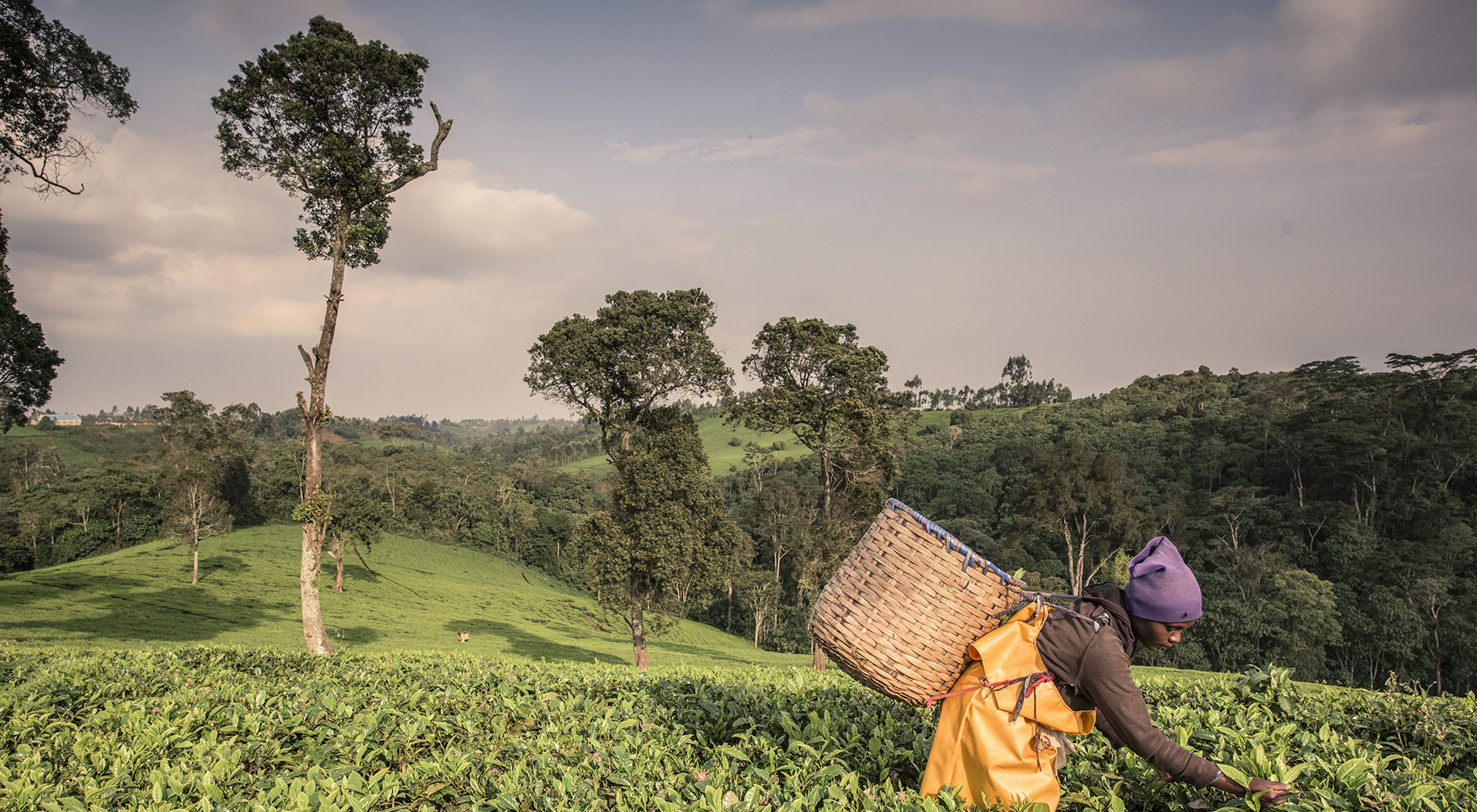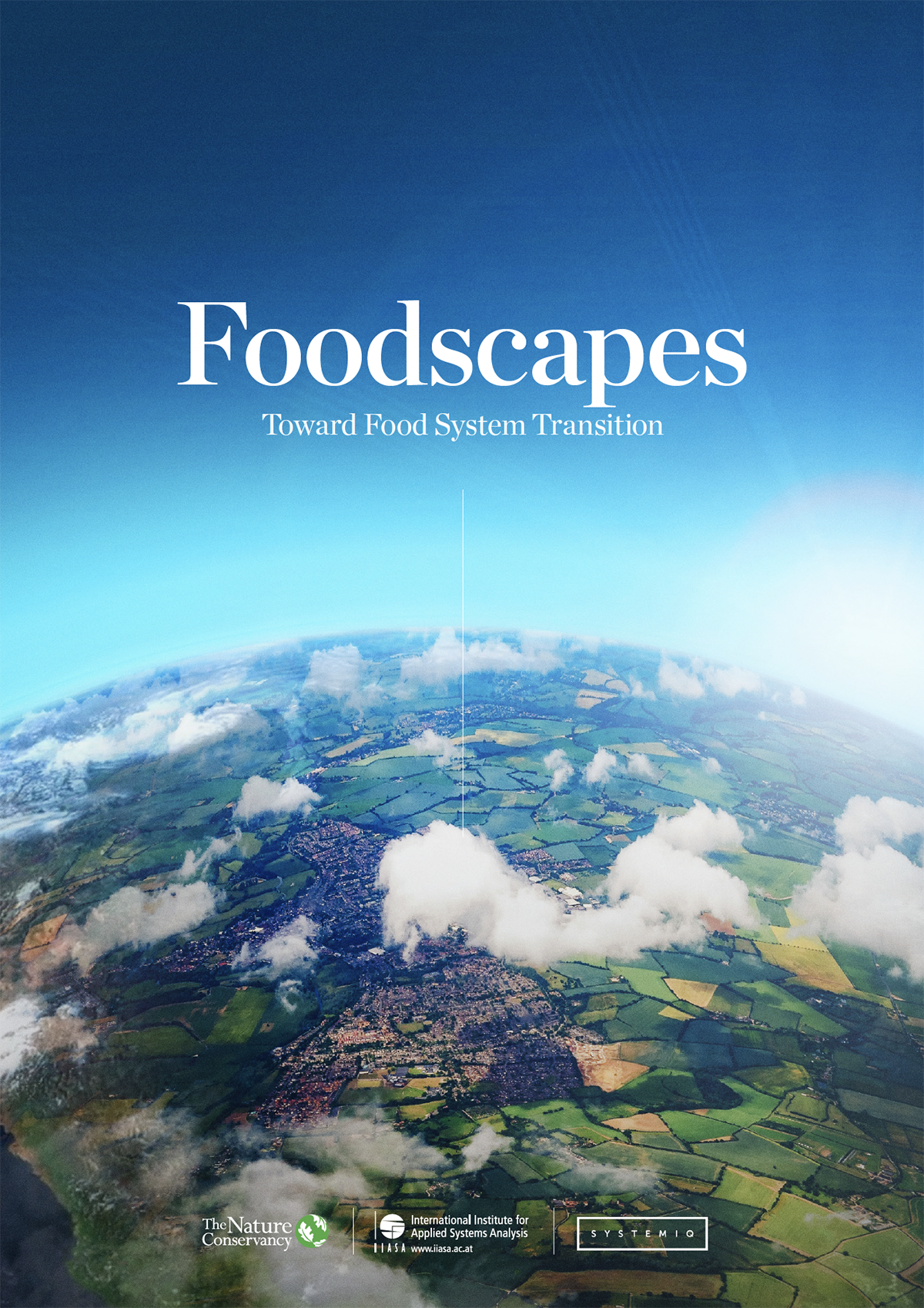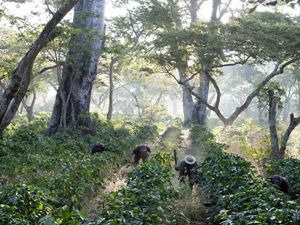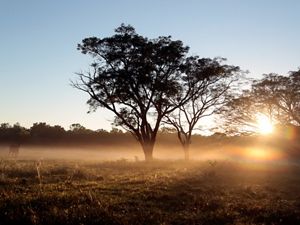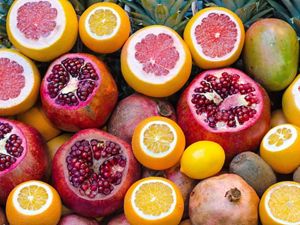Foodscapes: Accelerating a Regenerative Food Systems Transition
Transforming food systems as a central solution to meeting climate and biodiversity goals
The global food system is a major driver of climate change and biodiversity loss, accounting for nearly one-third of greenhouse gas emissions, 90% of tropical deforestation and 70% of water use globally. At the same time, climate change and biodiversity loss are making it much harder to produce food, threatening the livelihoods of producers and ultimately making it more difficult to feed a growing population.
But, as is often the case, some of the greatest solutions can come from the greatest challenges. This is true for our global food system, but we must act now to create a better path forward — a path that includes intentional, evidence-driven and collaborative change.
It's important to note that the global food system touches down across many sectors: land use, energy, waste, transport, processing, packaging, retail and consumption. Reforming this big, far-reaching system requires moving from high-level concepts to action. It means changing underlying incentives and norms. It means bringing the best science and sharing knowledge. It means shifting global policies and markets.
How can this happen?
Foodscapes. By using a foodscape-scale approach to planning and action, we can help drive progress that benefits both people and the planet.
Foodscapes: Accelerating a Food System Transition
New ways of envisioning, managing and implementing global food system transitions
Explore Our Planning ToolThe global mapping used in our report, Foodscapes: Toward Food System Transition, resulted in more than 80 foodscape classes that showcase the diversity of food production systems around the world. Understanding the diversity that underpins our global food system is a first step toward changing it. It can provide useful insight that can be further developed, adapted and applied using local, place-based knowledge.
We believe that mapping foodscapes helps realize the potential for nature-based solutions sensitive to local conditions, while also understanding how economic, political and community systems intersect when producing food.
Our Foodscapes Approach
Indigenous peoples and local communities around the world have led the way on regenerative production for a millenia—stewarding the world’s biodiversity and growing food in harmony with the natural environment. Bridging traditional knowledge and scalable nature-based interventions is critical to achieve an inclusive and sustainable food systems transformation and to accelerate system-wide change.
By working with local communities and focusing on the role of science and innovation to strengthen food systems, TNC aims to catalyze the implementation of regenerative practices across our portfolio of global foodscapes that can be a positive force for people and nature.
Through this portfolio of projects, TNC plans to demonstrate how to engage local producers and communities, the private sector and policymakers to accelerate regenerative practices. By scaling deep in a portfolio representing the diversity of geographic and food production archetypes, TNC is looking to develop a set of living labratories that can be replicated and scaled for collective global impact.
Through a systems-level and science-based approach that includes coalition building, coordinated planning, market development, supply chain actions and public policy, TNC wants to support these foodscapes’ transition to regenerative outcomes that meet climate, biodiversity and human welfare goals.
At the global level, TNC wants to build the science, partnerships and investment pathways that catalyze change at scale. We want to influence success by building coalitions and continuously learning, adapting and replicating what works —while balancing pace and scale with equity and inclusion of local communities.
Quote: Martin Frick
The concept of foodscapes helps us think about and embrace the complexities and interdependencies in a new way.
Foodscapes in Focus
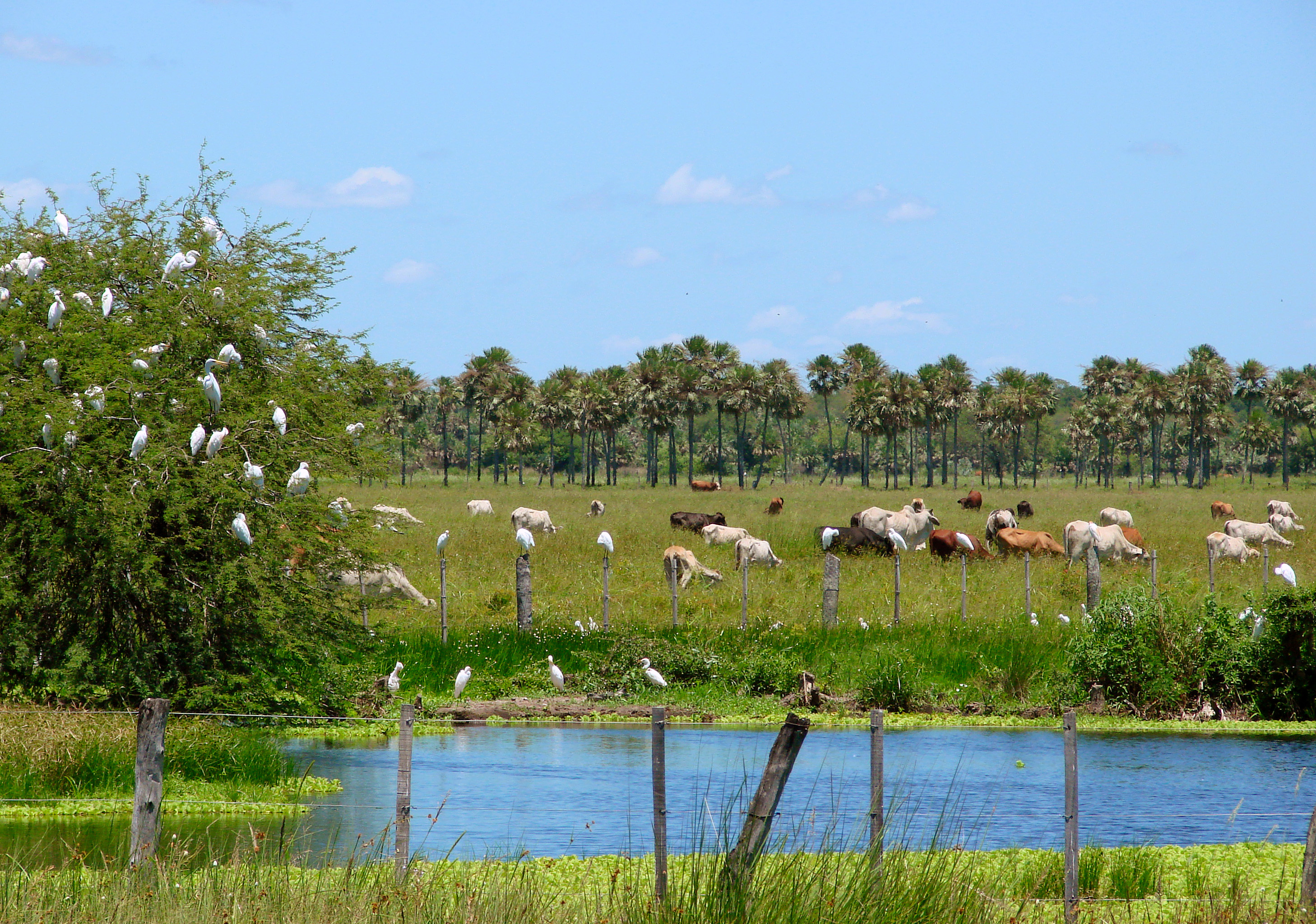
Argentina Gran Chaco
Halting Biodiversity Loss Through Diverse Food Production
Challenges:
Unsustainable agriculture has caused cumulative land degradation and habitat loss. Year upon year, the impact of grazing and agriculture is more visible as forests collapse, soil is degraded and key species like the jaguar, giant armadillo, tapir and giant anteater decline.
Forest loss severely impacts Indigenous peoples and ranchers that have traditionally used forests and other natural ecosystems for subsistence. Coupled with extreme poverty and a generalized lack of access to essential services, deforestation has a rapid adverse effect on the already fragile wellbeing of local communities.
Interventions:
TNC is working with local farmers and the larger conventional agricultural operations to:
- Increase soybean productivity while promoting healthy soils and habitat
- Integrate livestock production, forest buffers and cover crops to increase net production
- Create business models for livelihood-focused commodities such as honey, carob and other non-timber products
- Reduce tillage and plant winter cover vegetation
- Restore natural vegetation
Expected Outcomes:
- 1.7 million hectares conserved or better managed
- 1.2 million metric tons CO2e mitigated
- 10,000 people with improved livelihoods
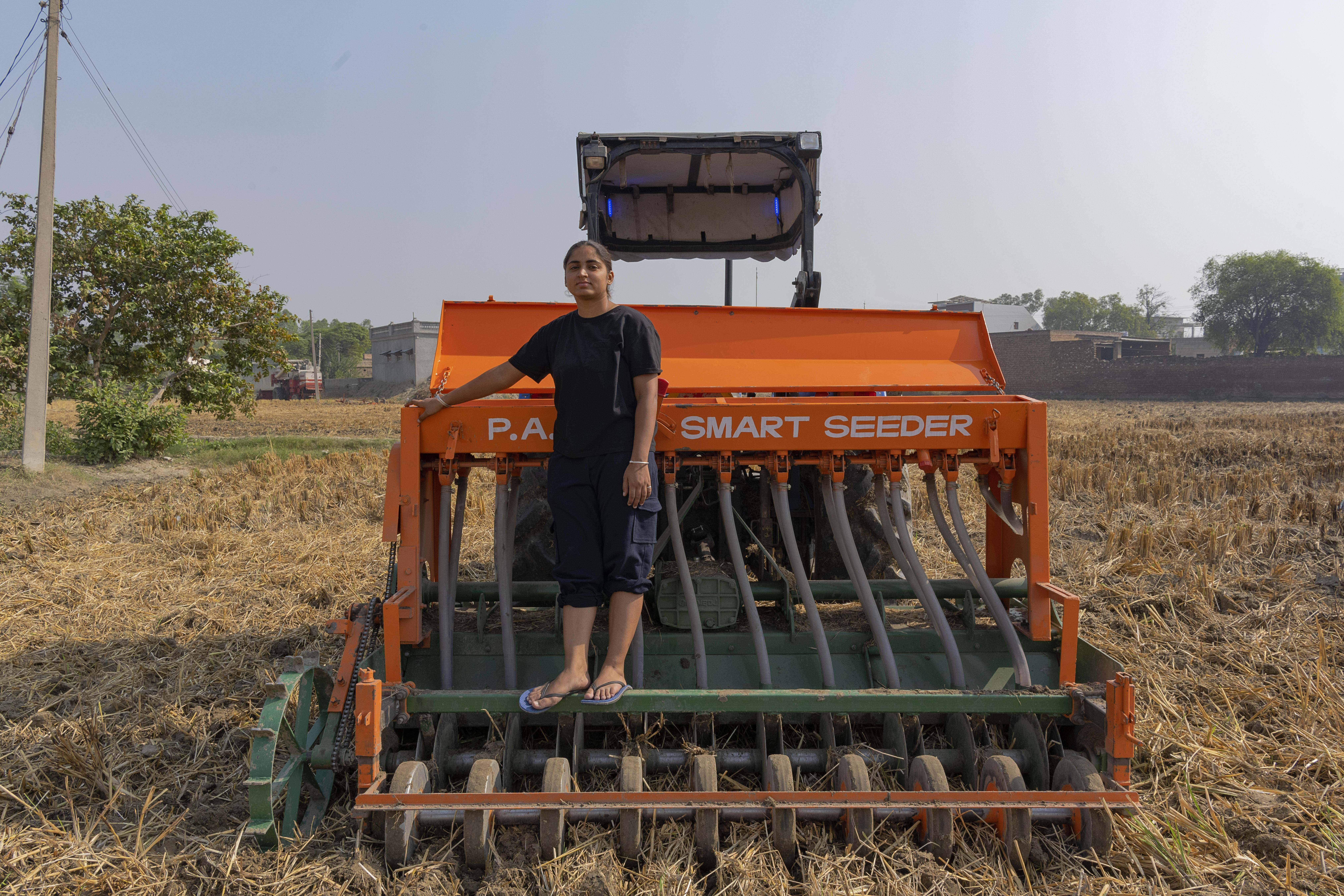
Northwest India
Targeting Incentives to Reduce GHGs, Improve Soil Health and Increase Water Security
Challenges:
This area of Northwest India is the most productive rice and wheat growing area in South Asia, providing almost half of the food system's grain, which is essential to food security. During the rice-wheat crop rotation, farmers burn their fields to quickly clear them. The smoke from burning fields across 2 million hectares annually harms farming families and then travels to Delhi, exacerbating the region’s air quality crisis. The residue burning practice is more than an annual air quality and public health concern, which affects marginalized communities the most; it’s actually reducing the region’s soil health and threatening long-term agricultural productivity.
Interventions:
In this critical foodscape, TNC's goal is to phase out crop residue burning, promote regenerative agricultural practices and support the agricultural community in a profitable and productive transition by:
- Scaling CRM technology solutions
- Directly seeding rice and wheat sowing to harvest
- Implementing water-saving practices
- Diversifying crops
Expected Outcomes:
- 250,000 farmers adopt zero-burning cropping systems
- 1.3 million metric tons of CO2e mitigated per year
- 500 billion liters of water saved
Kenya Central Highlands
Tackling Linked Challenges of Food, Water and Wildlife
Challenges:
In Kenya’s Central Highlands, the pressures of rapid population growth, climate change and expansion of agriculture and infrastructure are intensifying poverty, food insecurity and tensions among communities in the region. Human-wildlife conflict is on the rise.
While the Kenyan government is making progress to develop national policies supportive of regenerative agricultural practices, at the community level there are poor incentives to drive behavior change, poor mechanisms for coordination, and lack of sufficient financing to reverse chronic food insecurity and environmental degradation.
Interventions:
Through the Central Highlands Ecoregion Foodscape (CHEF), TNC has launched an ambitious effort to transform the region into a regenerative foodscape where food production practices can help improve the health of soil and water supplies and leave room and resources for wildlife. The team is focused on:
- Scaling regenerative portfolios with people and nature benefits in managed and non-managed landscapes
- Creating market systems that work to eliminate food waste and promote regenerative business models, equity and alternatives to extraction
- Building capacity for livelihood, land and water stewardship, among frontline organizations and producers
- Influence policies that aim to integrate, innovate and align efforts and investments, while providing incentives to prevent transformation from stalling
- Create a Foodscape Innovation Hub for governing partnerships and linkages, driving innovation, catalyzing (public and private) finance, supporting work on equity and ensuring data capture and utilization
Expected Outcomes:
- 1500 kilometers of streams and rivers under improved management
- 100,000 farmers and pastoralists with improved sustainable, place-based economic opportunity
- 150,000 hectares of land, including critical wildlife habitat, under improved management
- 100,000 tons per year of reduced CO2e emissions
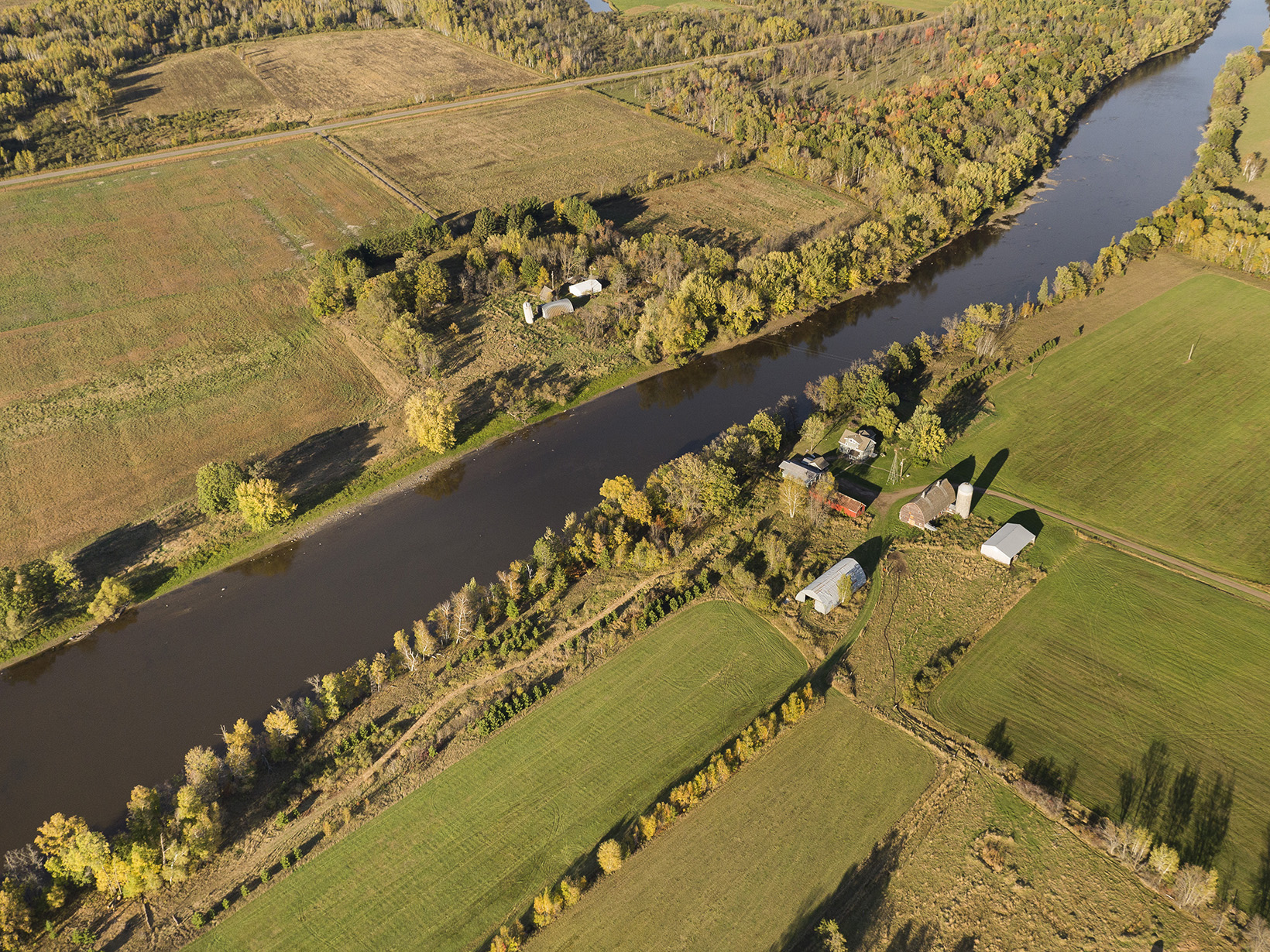
United States Upper Mississippi River
Shifting Supply Chain Incentives, Expanding Market Access and Enhancing Public Policy
Challenges:
A biodiversity hot spot, the Upper Mississippi River (UMR) basin is part of the larger 31-state Mississippi River system. Lands of the UMR basin were historically altered, converted from its natural habitat to row crop and livestock agriculture. Once intact lands are now fragmented. Habitats have been degraded. Communities are vulnerable to flooding. Aquatic life in lakes, rivers, streams and the Gulf of Mexico suffer the impacts of excessive nutrient runoff. Environmental impacts in the UMR have a reverberating effect on millions of people, as well as land and water resources and critical habitat throughout the Midwest and downstream to the Gulf of Mexico.
Interventions:
Building on our history of conservation and agriculture work, TNC is expanding partnerships in the UMR basin to help shift supply chain incentives, expand market access to diverse crops and enhance public policy incentives that drive adoption of regenerative practices like cover crops, no till, nutrient management, crop diversification and agroforestry.
A commitment to diversity, equity, inclusion and justice underpins this work. TNC will be working with organizations that represent and support underserved farming communities to assist with land and market access, technical and financial assistance and farmer network development.
Expected Outcomes:
- Better coordination and alignment between cropping and livestock systems and supply chains and supply chain actors
- Enabling conditions for widespread adoption of regenerative practices that generate income for producers and meet conservation goals
- New business models that achieve both ecosystem and profitability goals
- Improved water quality in miles of rivers
- Reduced greenhouse gas emissions
- Improved farmer livelihoods



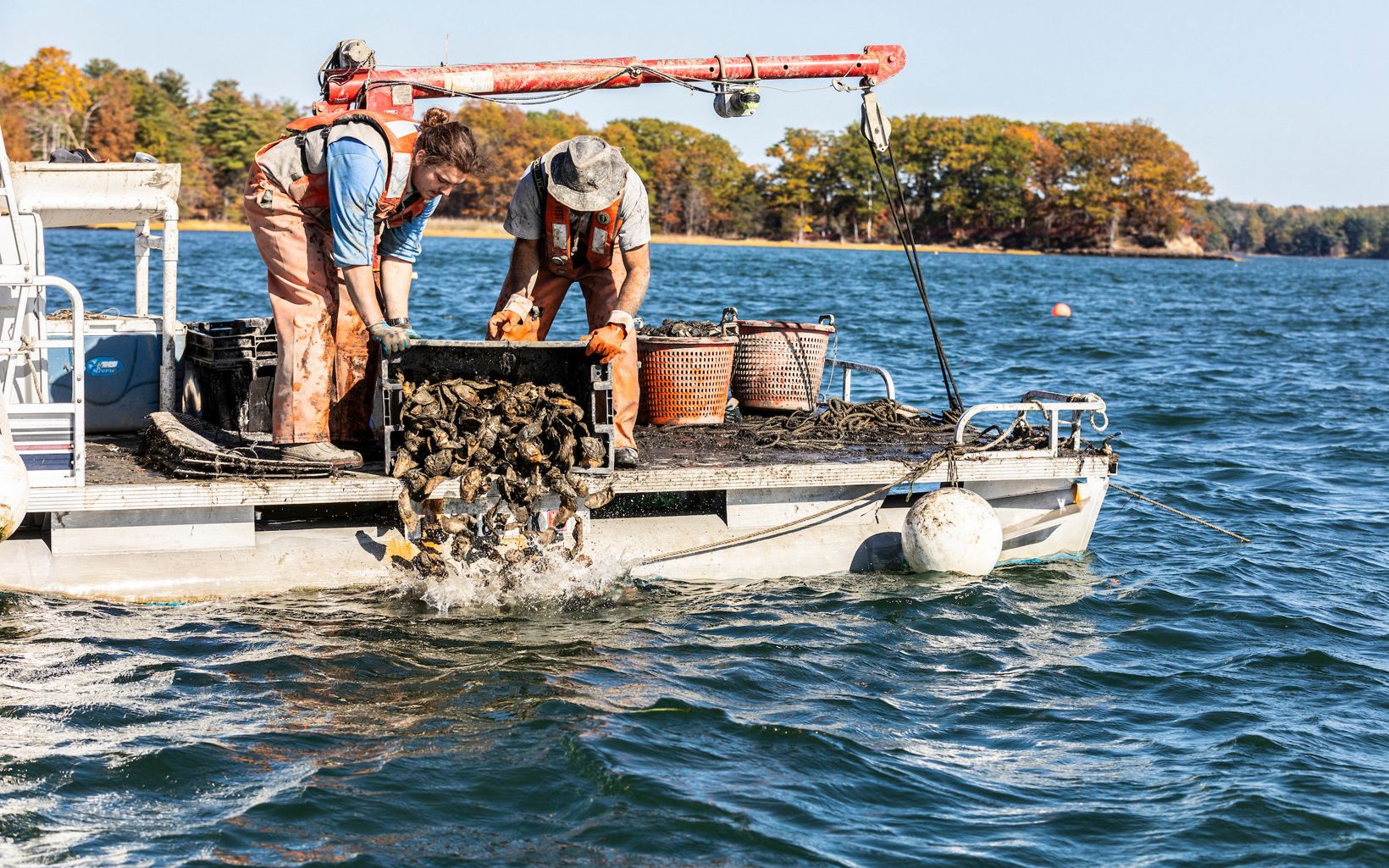










Download
New ways of envisioning, managing and implementing the transitions necessary for the full-scale transformation of our global food system
DOWNLOAD Get Executive Summaries & Case StudiesGlobal Insights
Check out our latest thinking and real-world solutions to some of the most complex challenges facing people and the planet today.
